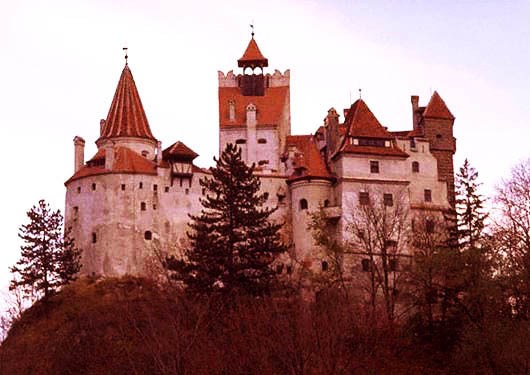Romania - The Secret is Out

Long hidden behind the shroud of Soviet secrecy, the fall of communism revealed a country wracked by infighting and political instability. Throughout the '90s Romania slowly, and sometimes clumsily, reinvented itself, remerging in the 21st Century as one of Europe's newest democracies and, as of January 2007, one of the newest EU member countries.
Now, as a 'mecca' for Europhiles and tourists in search of 'undiscovered' attractions, Romanians are taking renewed pride in their remarkably well-preserved Medieval and Middle Age architecture. These treasures of Romania have not been a secret to UNESCO however, and six cultural sites are inscribed on the coveted World Heritage list. A further fifteen sites are on the ‘tentative’ list, including the superb 800 year old medieval city of Sibiu which, incidentally, achieved the status of "2007 European Capital of Culture". The city of 170,000 is planning a cavalcade of events to mark this award.
Romania is however, most commonly recalled by outsiders as the land of Dracula and the despotic Ceauşescu, and is certainly a country defined by its unusual characters.
Count Dracula, also known as Vlad the Impaler of Transylvania, was a real life 15th Century iron-fisted ruler who delighted in putting his opponents to death by kebabing them on long poles. His character, sufficiently established in bloodlust, was an ideal adaptation for the human vampire of popular mythology. The author of Dracula, Bram Stoker, used the 13th Century Transylvania Bran Castle as a template for the character’s lair. This coincidental connection has certainly not stopped the locals capitalising on its infamy.
The region of Transylvania, meaning 'beyond the forest', is also for real. Occupying almost all of western Romania it is an area immersed in folklore and legend. Today it serves an agricultural and industrial function in the country's recovering economy and draws an increasing number of tourists as the word spreads about the superb castles, churches and civic constructions in cities like Alba Iulia, Cluj-Napoca, Sibiu, and Sighişoara, many being listed by UNESCO in their prestigious World Heritage list.
Sighişoara, for example, typifies the ancient heritage of Romania and is described by UNESCO as “an outstanding example of a small fortified city in the border region between the Latin-oriented culture of central Europe and the Byzantine-Orthodox culture of south-eastern Europe.” But you don’t need to be an academic to appreciate the rich history. Just walk along the narrow, rough cobblestoned alleys and streets, past the imposing 12th Century, Saxon built Citadel and into the medieval German inspired squares. It’s hard to imagine such evil spawned in this delightful town of just 30,000 inhabitants - this is the real birthplace of Vlad the Impaler!
The rich Transylvanian plateau drains via numerous rivers and tributaries into the mighty Danube. The burgeoning river cruises so popular further to the west are quickly working their way toward Bucharest as the luxury vessels search for new waters to explore. Travel to the mouth of the iconic river and you'll find yourself in the very beautiful and often overlooked Danube Delta region, described by UNESCO as 'the largest and best preserved of Europe's deltas.'
The half million hectare biosphere reserve hosts over 300 species of birds as well as 45 freshwater fish species in its numerous lakes and marshes. It is fast becoming Europe's most exciting area for eco-tourism in a continent starved for such experiences and the modern, sensitive traveller can stay at one of the only 5-star resorts in Romania built especially to satisfy fussy, environmentally-conscious visitors and enthusiastic fishermen.
In recent years, Europe has been struggling to reinvent itself. Common currencies, NATO and a constantly controversial European Union has encouraged travellers to look beyond the well-trodden paths of France, Spain, Germany and Italy. The 'rediscovery' of Romania has revealed a country abundant in magnificent architecture, overflowing with unspoiled villages and towns and swathed in refreshing forests. The people, largely unexposed to the rigours and pressures of 'western' ways are warm and welcoming and offer unusual relief from the hardcore tourist culture of old Europe.
Sydney-based adventure travel experts, Adventure Associates, offer a comprehensive 23-day 'Romania and the Balkan States' journey through six countries focussing on the architectural, cultural and natural attractions
The escorted tour incorporates both land and river excursions including 8 days luxury Danube River cruise. Optional 7-day extension: “Hungary; The Land of the Magyars”.
Tour cost is A$12990 pp twin share and includes airfares, accommodation and most meals. Hungarian extension: [ …] pp twin share
About Adventure Associates:
Adventure Associates, founded by current chairman and managing director, Dennis Collaton, in 1973, is Australia's longest established tour operator throughout Latin America, specialising in group and FIT travel. Following that tradition, the company continues to introduce ground-breaking new destinations such as Bhutan, Madagascar, Antarctica, the high Arctic, Galapagos and the Amazon into the Australian travel market.

